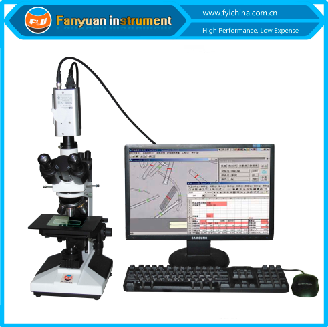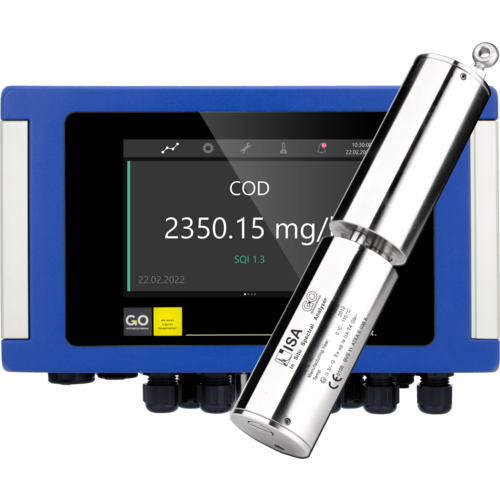Optimize Your Fibre Optic Performance: Understanding Optical Fiber Size Analyser Modern Technology
The efficiency of fibre optic systems is seriously affected by the precision of their size, an aspect frequently ignored in the search of ideal signal honesty. Recognizing the innovation behind optical fibre size analysers discloses the intricate equilibrium in between measurement precision and production high quality.
Value of Optical Fibre Diameter
The diameter of optical fibre plays a crucial role in establishing the performance and effectiveness of interaction systems. It influences several vital specifications, consisting of the setting of light proliferation, depletion, and bandwidth capability. Larger diameters commonly permit multiple light modes, promoting higher data transmission prices. On the other hand, smaller diameters tend to support less modes, which can improve signal clarity and lower crosstalk.

Additionally, understanding the size's effects can result in set you back savings by minimizing the demand for signal amplification and repeaters in considerable networks (optical fibre diameter analyser). Finally, the value of optical fibre diameter can not be overemphasized, as it straight influences the general effectiveness and integrity of modern interaction systems
Just How Size Impacts Signal Quality
Signal top quality in optical fibre systems hinges considerably on the size of the fibre. A smaller sized diameter can lead to greater attenuation rates, resulting in signal loss as light travels with the fibre.
Conversely, bigger diameters generally permit for enhanced light capture and reduced modal dispersion, improving signal quality. In multimode fibres, a larger core size can support numerous light modes, however it may also present intermodal diffusion, which can break down signal quality. For that reason, selecting the optimum fiber size is critical for attaining the wanted performance in details applications.
In addition, the interaction in between the fibre size and the wavelength of the light utilized plays a crucial duty in establishing the efficient transmission distance and general signal integrity. Recognizing just how fibre size influences signal top quality is crucial for network designers and engineers striving to maximize optical fiber systems for reputable, high-speed data transmission.
Review of Diameter Analyser Innovation
In several optical fiber manufacturing procedures, exact dimension of fiber diameter is vital for guaranteeing consistent performance and high quality (optical fibre diameter analyser). Diameter analysers are sophisticated tools made to examine the physical dimensions of optical fibres with high precision. They employ advanced optical and laser modern technologies to measure the diameter, ovality, and concentricity of the fiber, therefore offering critical information for high quality control
These analysers can run in-line during the production process or as part of off-line screening procedures. In-line systems enable real-time monitoring, permitting suppliers to adjust specifications immediately, consequently keeping optimal production problems. Off-line analysers, on the other hand, supply comprehensive assessments of sets, ensuring that any deviations from specified tolerances are recognized and dealt with.
Size analysers dramatically add to the reduction of issues in optical fibres, improving overall item dependability. By continually measuring crucial criteria, these innovations facilitate compliance with sector standards and specs. As the need for high-performance optical fibres continues to rise, the role of diameter analysers ends up being significantly vital in attaining the wanted top quality and efficiency standards in fiber optic systems.
Secret Attributes of Fiber Diameter Analysers
Although various models of fiber diameter analysers exist, they commonly share numerous essential attributes that improve their capability and reliability. Among the most substantial features is high-resolution dimension abilities, which guarantee precise size analyses, important for maintaining top quality control in fiber manufacturing. Additionally, lots of analysers integrate advanced optical sensing units developed to detect minute variants in fibre size, thus giving invaluable information for procedure optimization.
An additional important feature is real-time surveillance, permitting drivers to receive immediate feedback on fiber size throughout the production procedure (optical fibre diameter analyser). This capability promotes quick changes and minimizes the likelihood of flaws. Numerous analysers additionally come equipped with straightforward interfaces, making it possible for drivers to conveniently browse through data and setups outputs
Moreover, durable information storage and analysis capabilities are necessary for tracking historical efficiency fads and guaranteeing conformity with industry requirements. Some designs also offer connectivity choices for combination into existing manufacturing control systems, enhancing general functional performance. Portable and mobile layouts allow for flexible release within manufacturing settings, making certain that top quality guarantee processes are seamless and effective. These features jointly add to the efficacy of fiber size analysers in enhancing fibre optic performance.
Finest Practices for Fibre Optimization

First, normal calibration of optical fibre useful source size analysers is crucial. This guarantees exact dimensions and reduces possible disparities that could impact efficiency. Next off, maintaining a tidy working setting is important; dirt and contaminants can lead to indicate deterioration.
In addition, it is important to choose fibres that meet certain application needs. This includes evaluating elements such as depletion, transmission capacity, and ecological problems. Correct setup techniques need to also be complied with, consisting of preventing sharp bends and too much tension, which can endanger fiber integrity.
Moreover, utilizing advanced tracking systems can promote real-time performance evaluations, making it possible for prompt identification of problems. Normal screening and maintenance ought to be carried out to make sure that fibres remain within ideal operational parameters.
Last but not least, training personnel on the current fiber optimization modern technologies and methodologies will improve their ability to carry out reliable strategies. By complying with these ideal practices, companies can substantially boost the efficiency and lifespan of their optical fiber systems, making certain effective interaction and data transfer.
Verdict
To conclude, the assimilation of optical fibre size analyser innovation is crucial for taking full advantage of fiber optic performance. By making certain check my reference precise dimensions of fiber measurements, these analysers dramatically enhance signal quality and reduce losses throughout data transmission. Normal calibration and upkeep of the analysers are essential to copyright ideal efficiency and compliance with industry criteria. Eventually, the application of this modern technology facilitates boosted data transmission rates and enhances signal integrity, adding to the general effectiveness of fiber optic systems.
Signal quality in optical fiber systems hinges considerably on the diameter of the fibre.In lots of optical fiber manufacturing processes, accurate dimension of fibre size is vital for making sure constant efficiency and high quality. As the need for high-performance optical fibres continues to increase, the role of diameter analysers ends look here up being significantly vital in achieving the wanted top quality and performance requirements in fiber optic systems.
These features jointly add to the effectiveness of fibre diameter analysers in enhancing fibre optic performance.
In conclusion, the integration of optical fibre size analyser innovation is critical for maximizing fiber optic efficiency.